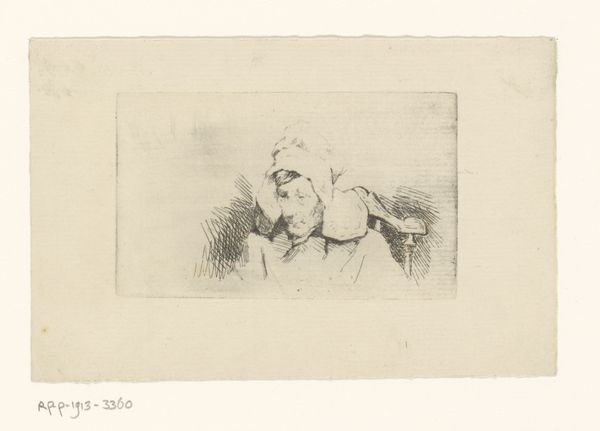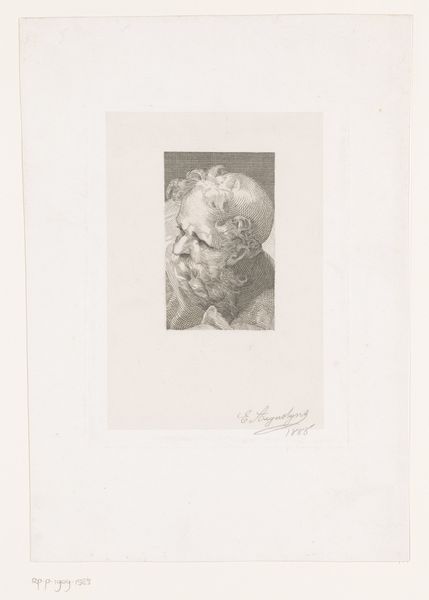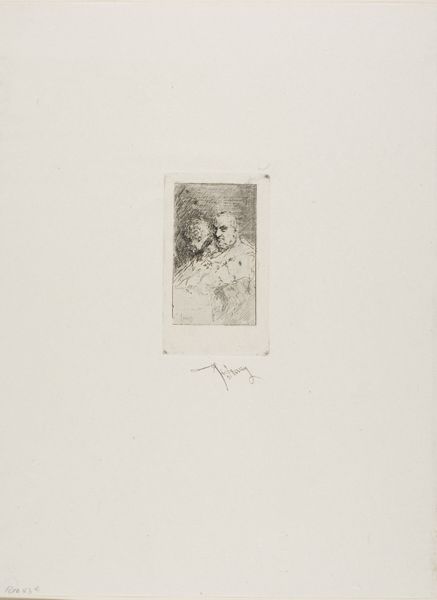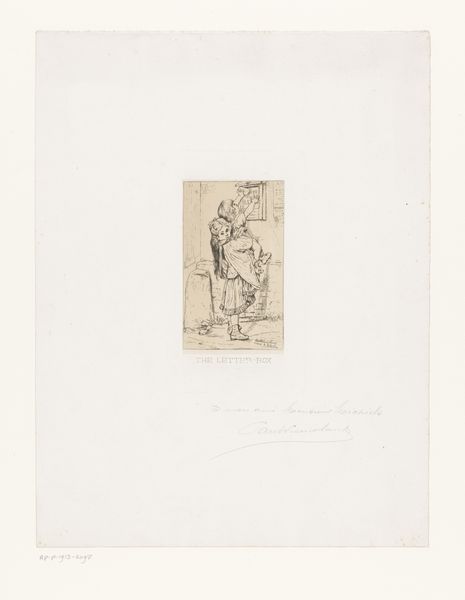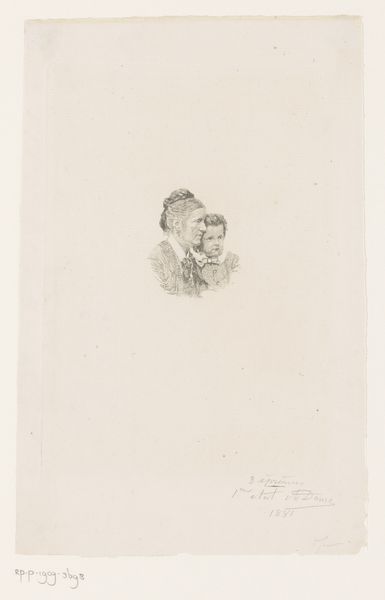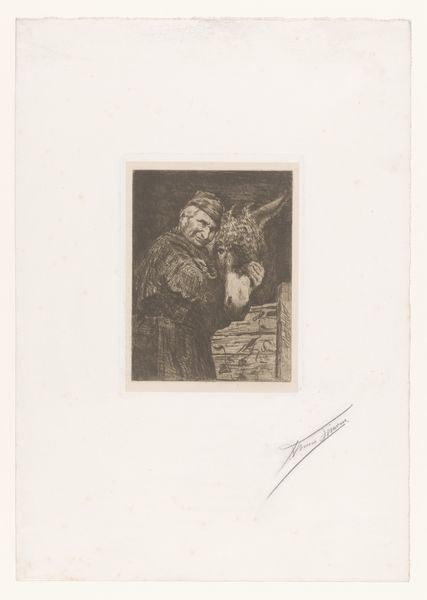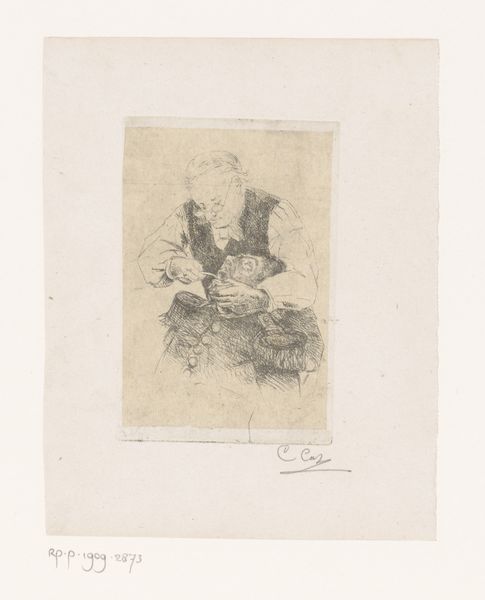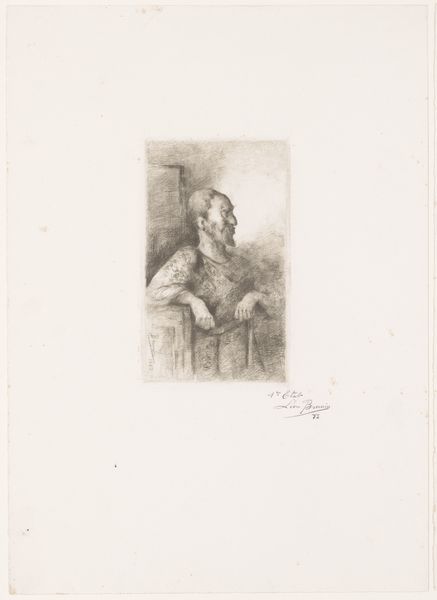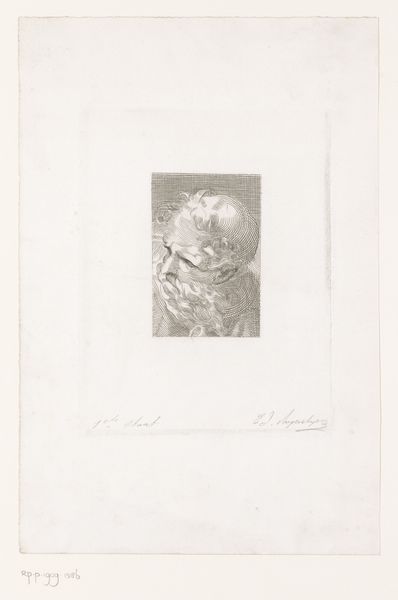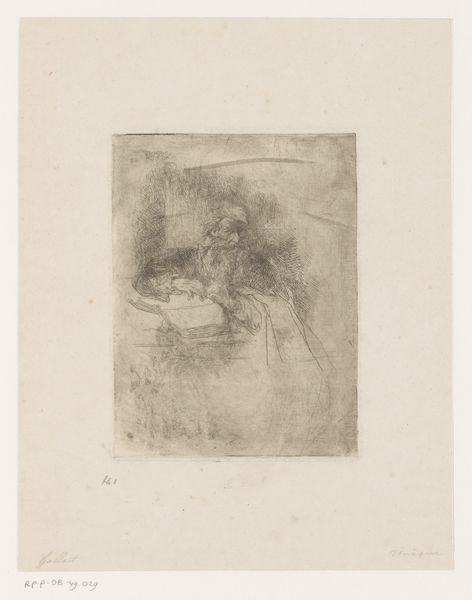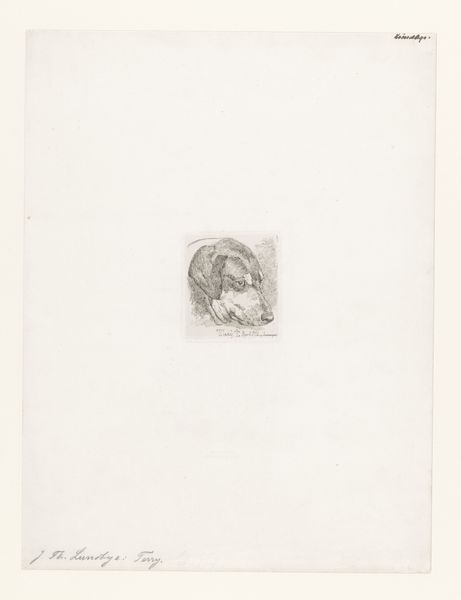
drawing, print, etching
#
portrait
#
drawing
#
baroque
# print
#
etching
Dimensions: height 69 mm, width 56 mm
Copyright: Rijks Museum: Open Domain
Editor: This is "Oude man met baard," or "Old Man with Beard," an etching by Johann Heinrich Schönfeld, made in 1626. The scale seems really intimate. What strikes me most is the almost aggressive cross-hatching that creates such depth and texture. What do you see in this print? Curator: Initially, the composition grabs my attention. The artist employs a rather confined picture plane, boxing the subject tightly. Notice the intense concentration of line and tone focused centrally, forming the core of the man’s face and beard. From there, it loosens and dissipates outwards toward the periphery. It suggests an emotional encapsulation of the subject. What do you make of this formal choice? Editor: I think you’re right! Keeping the lines so tight really gives the work a claustrophobic, internal feeling. Was this kind of stark representation common for portraiture at this time? Curator: Common isn't precisely the term I’d apply, but pertinent certainly is. Baroque art, after all, seeks the spectacular and theatrical, but is also keenly aware of human interiority and individualistic spirituality. The use of etching as a medium, instead of drawing, also informs its effect. Etching allows for extremely fine detail, enhancing that contrast between a broader style with a concentration of emotion. Would you say this adds to or subtracts from that drama, or does it create something new? Editor: It’s adding a level of precision, like looking really closely at something dramatic but on a miniature scale. It feels so deliberate! Thanks for sharing your perspective. I think I’m starting to get a handle on what to look for in Baroque portraiture. Curator: Likewise, your fresh reaction reframed my outlook. Focusing on those initial sensory details makes a vital addition to any formal understanding.
Comments
No comments
Be the first to comment and join the conversation on the ultimate creative platform.
